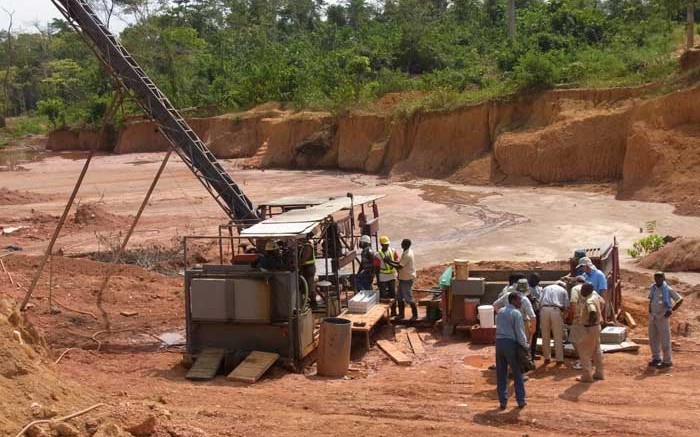In a friendly all-share deal valued at $183 million, Asanko Gold (TSX: AKG; NYSE-MKT: AKG) plans to take over PMI Gold (TSX: PMV; ASX: PVM; US-OTC: PMVGF) to create an emerging mid-tier gold producer.
“This is a compelling value-accretive transaction for both Asanko and PMI shareholders, as it enables the co-development of Asanko’s Esaase gold project and PMI’s Obotan gold project — which are located within a 15 km radius of each other — as a single mining operation, capturing operating and capital-cost synergies in an excess of US$100 million,” Peter Breese, Asanko’s CEO, said on a conference call.
The combined company could be producing as much as 400,000 oz. gold a year from the asset starting in 2017.
“This transaction is obviously good news for Ghana, as it delivers certainty to the development of both Esaase and Obotan, creating a world-class mining operation in a country which has recently suffered from the weak gold price and the knock-on effect that it has had on [gold] production, jobs and government revenue,” added Peter Bradford, PMI’s CEO. “We are particularly pleased that this business combination will help reverse this negative trend in Ghana, which has a rich and enviable history of lush gold production over many years.”
PMI investors will receive 0.21 of an Asanko share for each PMI share held. This values each PMI share at 44¢ — a 79% premium over the 20-day, volume-weighted average share price as of Dec. 16. Once the deal closes, shareholders of both companies would each own half of the combined entity.
This is Asanko’s second attempt at buying PMI. Late last year, Asanko — then known as Keegan Resources — intended to acquire PMI under the same share-exchange ratio. But that initiative was mutually terminated in February 2013 due to a lack of PMI shareholder support for the deal, then valued at $339 million. The main objection from key PMI shareholders at the time was that the merger assigned too much value to Asanko’s projects, noting the gold grade at Esaase was lower than that at Obotan.
But since then, Breese says Asanko has improved gold recoveries at Esaase, published a promising prefeasibility study, advanced permitting and lined up US$150 million in project financing.
The macroeconomic environment has also weakened from earlier this year, with tumbling gold prices and declining share prices adding to the benefits the merger could deliver, by lowering corporate costs and co-developing of the two deposits, which would create synergies, Breese adds.
The combined company is projected to have US$280 million in cash, a US$150-million debt facility and a $363-million market capitalization. It would control a consolidated, 1,000 sq. km land package in Ghana.
Both companies’ boards unanimously support the deal. Shareholders representing 20% of PMI and 9.4% of Asanko have already agreed to back the agreement.
The transaction requires approval from two-thirds of PMI shareholders and a simple majority by Asanko shareholders, and contains a $9.4-million break fee.
Asanko’s CEO and management team will lead the combined company under the direction of a new board. The seven-member board will consist of Asanko’s Breese and current directors Gordon Fretwell, Marcel de Groot, Shawn Wallace and Colin Steyn, plus PMI’s CEO Bradford and director Michael Price. A chairman will be appointed early next year.
Under the integration plan, Esaase will be developed first. A feasibility study for Esaase is due early next year, with construction expected in the first half of 2014. Esaase is projected to produce 200,000 oz. gold per year for at least 10 years, with first production slated for the second half of 2015. Initial costs for the open-pit mine are pegged at US$286.4 million.
Once Esaase comes online, Asanko will begin developing Obotan. In the meantime, it is investigating whether to transport ore from Obotan to Esaase’s expanded plant, or ship flotation concentrate to Esaase for leaching. Both scenarios would save US$100 million in development and operating costs. Obotan is targeted to start production by 2017.
“This is a unique opportunity and one that is rare in the mining industry today, because we have two deposits both with proven reserves, close to the construction phase, within a 15 km radius of each other,” Breese said on the call.
A September 2012 definitive feasibility study for Obotan envisioned an open-pit operation producing more than 200,000 oz. gold a year for 10 years, based on reserves of 34.2 million tonnes grading 2.21 grams gold per tonne for 2.43 million oz.
Esaase has reserves of 52.34 million tonnes grading 1.41 grams gold for 2.37 million oz.
On the merger news, PMI soared 45% to 40.5¢, and Asanko dipped nearly 3% to $2.04.


Be the first to comment on "Asanko takes a second go at PMI"